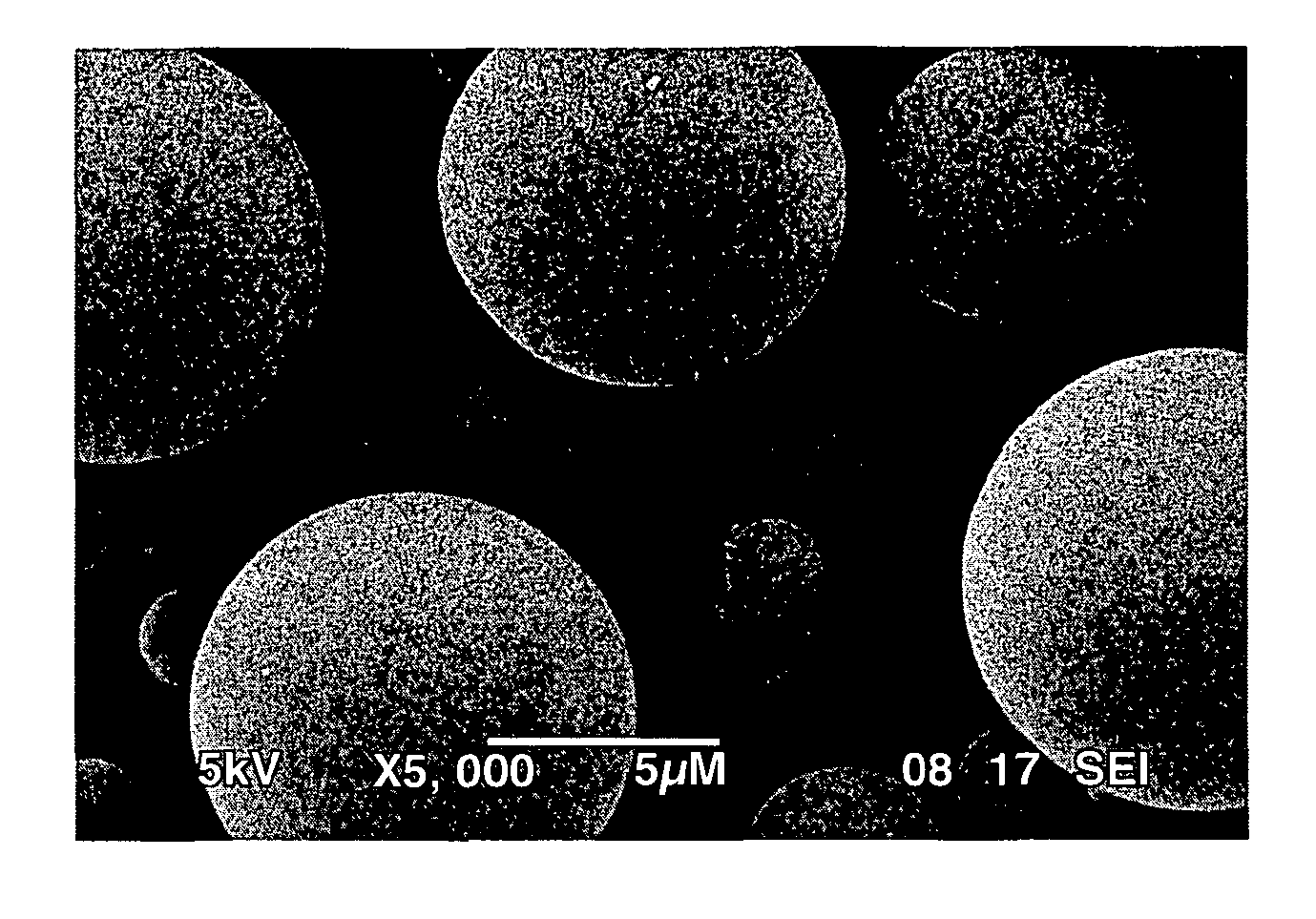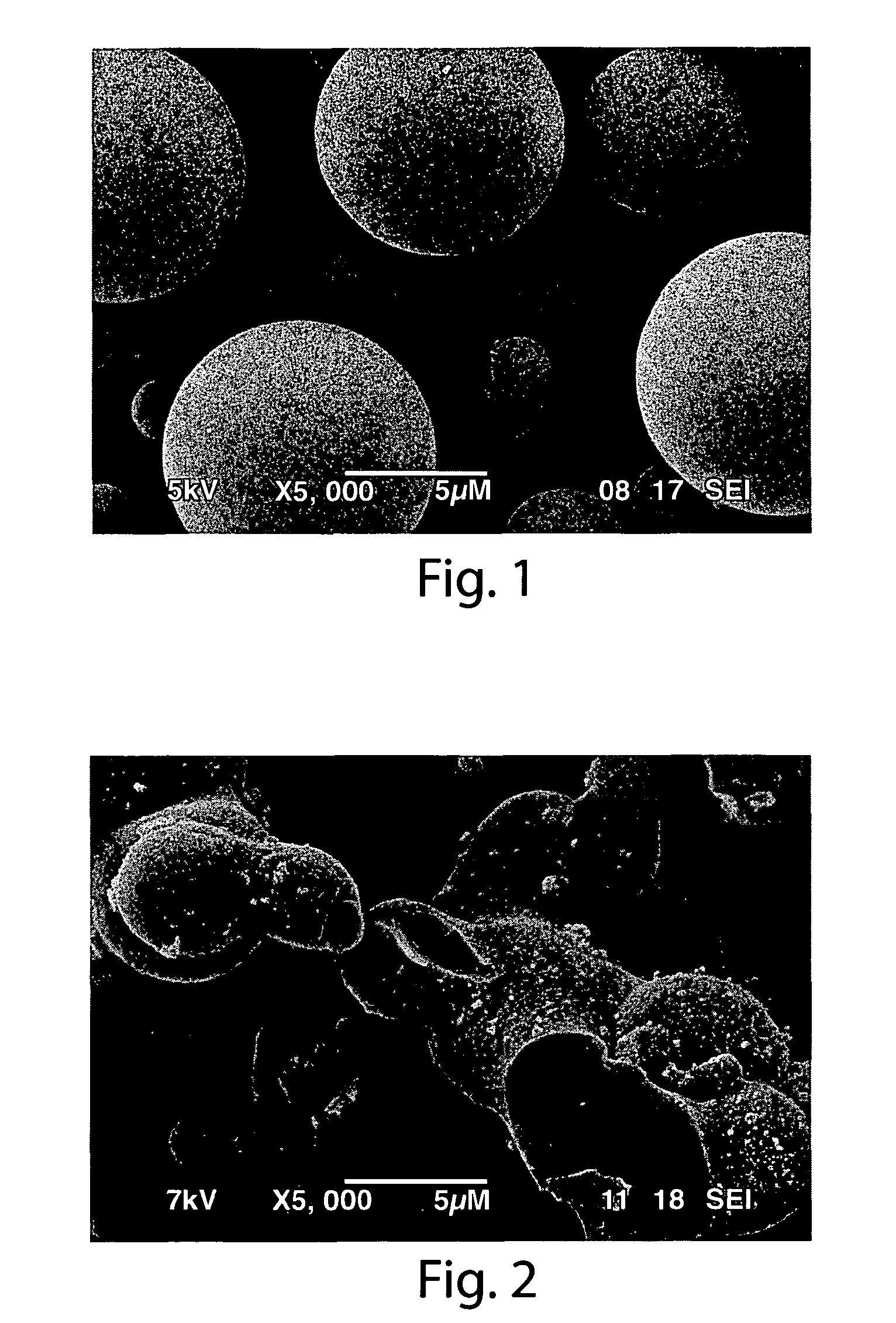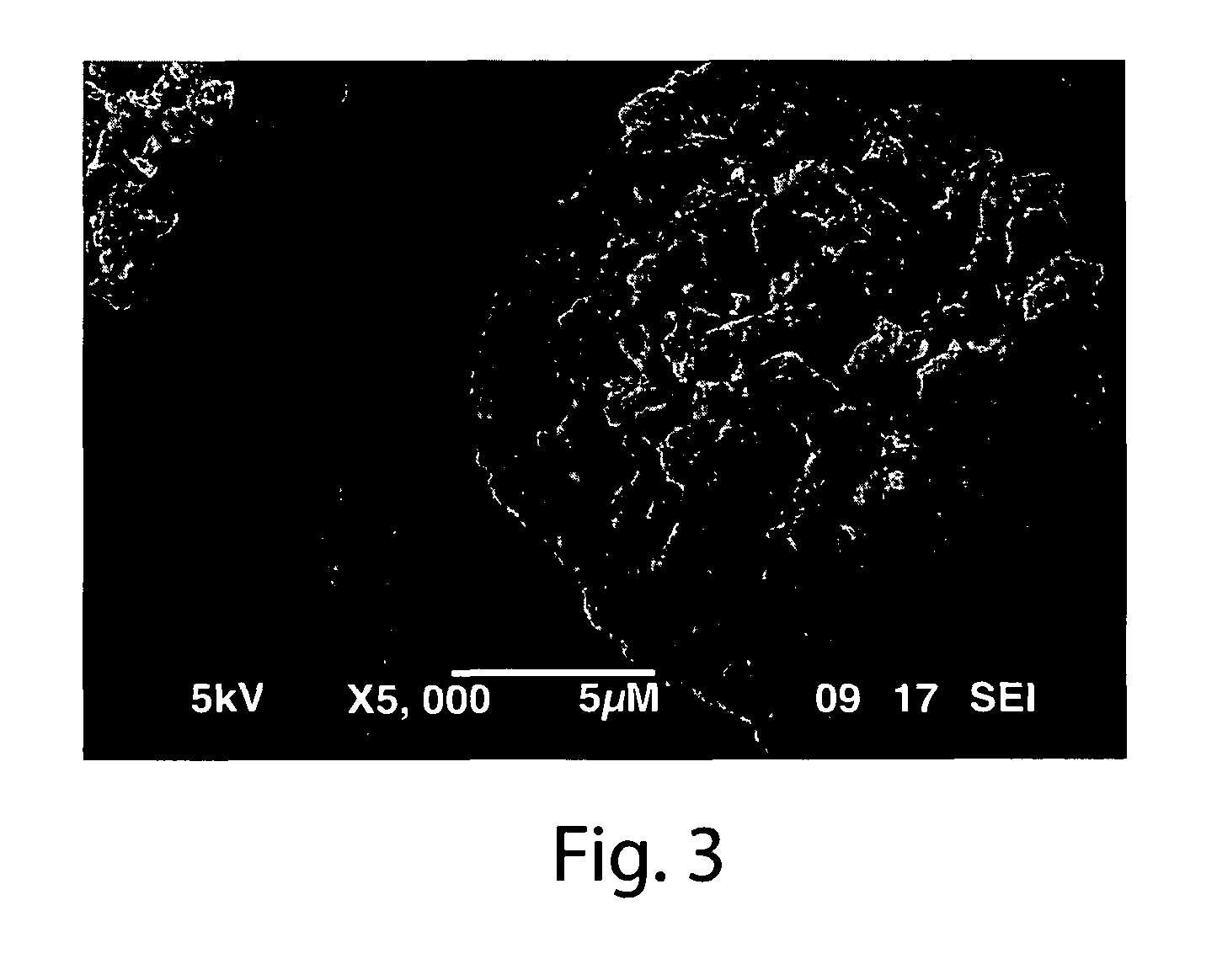Porous inorganic/organic hybrid particles having high organic content and enhanced pore geometry for chromatographic separations
a technology of organic chromatographic and hybrid particles, which is applied in the direction of separation with moving sorbents, natural mineral layered products, synthetic resin layered products, etc., can solve the problems of insufficient separation performance, many organic chromatographic materials shrink and swell, and most organic chromatographic materials do not have the mechanical strength of typical chromatographic silicas, etc., to achieve advantageous chromatographic selectivity, increase chemical stability, and high organic content
- Summary
- Abstract
- Description
- Claims
- Application Information
AI Technical Summary
Benefits of technology
Problems solved by technology
Method used
Image
Examples
example 1
Synthesis of Polyorganosiloxanes
[0270]One or more organoalkoxysilanes (all from Gelest Inc., Morrisville, Pa. or United Chemical Technologies, INC., Bristol, Pa.) were mixed with ethanol (anhydrous, J. T. Baker, Phillipsburgh, N.J.) and 0.1 N hydrochloric acid (Aldrich, Milwaukee, Wis.) in a flask. The resulting solution was agitated and refluxed for 16 hours in an atmosphere of argon or nitrogen. Alcohol was removed from the flask by distillation at atmospheric pressure. Residual alcohol and volatile species were removed by heating at 95-120° C. for 1-2 hours in a sweeping stream of argon or nitrogen. The resulting polyorganoalkoxysiloxanes were clear viscous liquids. The chemical formulas are listed in Table 1 for the organoalkoxysilanes used to make the product polyorganoalkoxysiloxanes (POS). Specific amounts are listed in Table 2 for the starting materials used to prepare these products.
[0271]
TABLE 1OrganoalkoxysilanOrganoalkoxysilane AOrganoalkoxysilane or Alkoxysilane BCProdu...
example 2
Synthesis of Porous Hybrid Freshmade Particles with a Constant Base:POS Weight Ratio
[0273]An aqueous mixture of Triton® X-100 (X100, Dow Chemical, Midland, Mich.), deionized water and either ethanol (EtOH; anhydrous, J. T. Baker, Phillipsburgh, N.J.) or tert-butyl alcohol (BuOH; J. T. Baker, Phillipsburgh, N.J.) was heated at 55° C. for 0.5 h. In a separate flask, an oil phase solution was prepared by mixing 1a from Example 1 for 0.5 hours with one of the following reagents: toluene (Tol; HPLC grade, J. T. Baker, Phillipsburgh, N.J.), mesitylene (Mes; Aldrich, Milwaukee, Wis.). Under rapid agitation, the oil phase solution was added into the EtOH / water / X100 mixture and was emulsified in the aqueous phase using a rotor / stator mixer (Model 100L, Charles Ross & Son Co., Hauppauge, N.Y.). Thereafter, 30% ammonium hydroxide (NH4OH; J. T. Baker, Phillipsburgh, N.J.) was added into the emulsion. Suspended in the solution, the gelled product was transferred to a flask and stirred at 55° C. ...
example 3
Synthesis of Porous Hybrid Freshmade Particles with a Mixed Surfactant Composition and Constant Porogen:POS Weight Ratio
[0276]An aqueous mixture of Triton® X-100 (X100, Dow Chemical, Midland, Mich.), sodium dodecyl sulfate (SDS, J. T. Baker, Phillipsburgh, N.J. or Sigma Chemical Co., St. Louis, Mo.), deionized water and ethanol (EtOH, anhydrous, J. T. Baker, Phillipsburgh, N.J.) was heated at 55° C. for 0.5 h. In a separate flask, an oil phase solution was prepared by mixing 1a from Example 1 for 0.5 hours with mesitylene (Mes; Aldrich, Milwaukee, Wis.). Under rapid agitation, the oil phase solution was added into the EtOH / water / X100 / SDS mixture and was emulsified in the aqueous phase using a rotor / stator mixer (Model 100L, Charles Ross & Son Co., Hauppauge, N.Y.). Thereafter, 30% ammonium hydroxide (NH4OH; J. T. Baker, Phillipsburgh, N.J.) was added into the emulsion. Suspended in the solution, the gelled product was transferred to a flask and stirred at 55° C. for 16 h. Formed par...
PUM
| Property | Measurement | Unit |
|---|---|---|
| size | aaaaa | aaaaa |
| size | aaaaa | aaaaa |
| pore size distribution | aaaaa | aaaaa |
Abstract
Description
Claims
Application Information
 Login to View More
Login to View More - R&D
- Intellectual Property
- Life Sciences
- Materials
- Tech Scout
- Unparalleled Data Quality
- Higher Quality Content
- 60% Fewer Hallucinations
Browse by: Latest US Patents, China's latest patents, Technical Efficacy Thesaurus, Application Domain, Technology Topic, Popular Technical Reports.
© 2025 PatSnap. All rights reserved.Legal|Privacy policy|Modern Slavery Act Transparency Statement|Sitemap|About US| Contact US: help@patsnap.com



